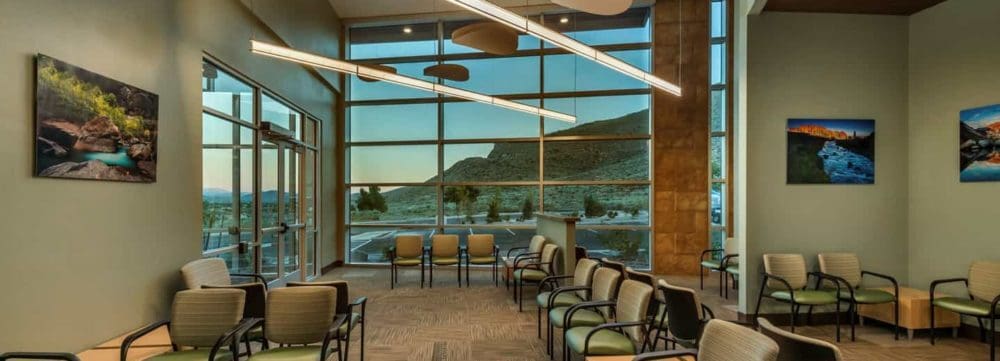Blog
How-To Incorporate Art into Healthcare Spaces

Incorporating art into healthcare spaces promotes positive outcomes for patients, families, and staff. Recently, Healthcare Design Magazine shared these experts tips on incorporating art into healthcare spaces.
The Center for Health Design recently presented the webinar “How to Commission Art in Your Healthcare Environment.” Speaker Stefanie O’Keefe, RFP specialist at CODAworx, an online global network that connects design projects and commissioned artwork, says art can have many positive effects on patients, and that it’s important for project teams to begin discussing their art needs as soon as possible to help save money on the art and installation budget and to ensure the works are fully integrated into the new space.
To help project teams in these tasks, including finding the right artist, commissioning new art, and planning for art projects, O’Keefe shared these tips:
Identify the Project Vision
The first step is to identify your project and determine where you want to display art. Start by considering your space needs and restrictions: Can the art be touched? Will it be in a public space? What style or type of artwork of you looking for. O’Keefe recommends focusing on abstract questions that you can answer, such as a theme you would like to focus on (e.g. nature), core values you’d like to translate into an art piece, or whether the art needs to help with wayfinding, and then rely on artists and their creativity to help you find the right solutions.
Teams should also define any specific media preferences, such as glass or metal, and create a timeline and budget to ensure the artwork can be completed and installed in time. Teams can expect that art under $100,000 will take 5-10 months from the beginning of planning to installation. Art that ranges from $100,000 to $200,000 will take between 8-16 months, and art over $200,000 will take 18 to 42 months.
Explore Different Commissioning Methods
Once the project vision and criteria have been established, teams should begin their search for the right artist. Conducting an internet search can deliver a lot of leads. O’Keefe says one way to narrow down that list is to focus on local artists, which can also cut down on shipping costs and markups from consultants.
Other tips for finding the right artist include:
- Seeing if there’s a person within a healthcare organization or firm who is already responsible for art. This person may have a rolodex of potential artists.
- Hiring an art curator to locate artists.
- Using galleries. These companies represent multiple artists, but they usually include a high markup. This route is recommended for those purchasing existing artwork as opposed to commissioning a new piece.
- Finding art consultants, who can have a pool of artists to choose from and can help find multiple pieces of art, as well as help create wayfinding systems.
- Sending out request for proposals (RFPs) and request for qualifications (RFQs) that define the criteria for the art project. Artists will respond to a RFQ if they feel qualified, which can help bring in a larger sampling of potential artists. RFQs can be sent to mailing list, galleries, local art councils, and city and state procurement sites. From there, teams can narrow their choices and send the top three or four a RFP. At that point, artists will propose specific art projects for a space.
Plan Ahead
Most important, all of this should be done as soon as the project begins. When art is incorporated later in the project, it can seem like an afterthought, including being placed in less-than-ideal locations. It’s also important for teams to get everyone, including artists, architects, art consultants, interior designers, landscape architects, and healing arts coordinator, involved as early as possible, so that everyone can participate in the conversation.
Incorporating art into healthcare spaces is another tool to promote positive outcomes for patients, families, and staff. Taking the right planning steps can help project teams find the right artworks for their facilities and projects.
Carolyn Glaser, MA, EDAC, is vice president for strategy and operations at The Center for Health Design. She can be reached at cglaser@healthdesign.org.
Source
Carolyn Glaser, MA, EDAC. “Finding The Right Art For Your Healthcare Project.” HCD Magazine, 12 Jan. 2018, www.healthcaredesignmagazine.com/trends/perspectives/finding-right-art-healthcare-project/.
Photo Caption
Marie Wikoff of Wikoff Design Studio worked with Dewitt Jones of Healing Images to adorn the walls with healing images.







